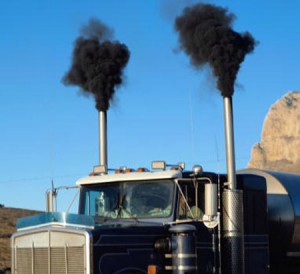 Whenever dangerous nitrogen oxides are generated after a fuel-combustion process, a selective catalytic reduction (SCR) step is implemented in the process to catalyse their conversion into less harmful molecular nitrogen and water. Large diesel engines, industrial boilers and furnaces are an example of the areas in which this technology plays a fundamental role in keeping the fumes emission clean.
Whenever dangerous nitrogen oxides are generated after a fuel-combustion process, a selective catalytic reduction (SCR) step is implemented in the process to catalyse their conversion into less harmful molecular nitrogen and water. Large diesel engines, industrial boilers and furnaces are an example of the areas in which this technology plays a fundamental role in keeping the fumes emission clean.
Most catalysts for SCR are consist of metal oxides absorbed on porous supports as alumina, zirconia, titanium oxide and zeolites that, in synergy with a reducing agent like ammonia or urea efficiently decompose nitrogen oxides at relatively low temperatures. The understanding of the interactions between the metal oxides and the supports is of key importance in the development of increasingly efficient catalysts.
After working on copper-containing catalysts for the ammonia-catalysed SCR with low toxic profile, the Chinese group of Duan Weng, presented a comprehensive characterisation of their most effective CuOx-WOx-zirconia systems and highlighted the importance of tungsten oxides for the efficacy of the catalyst. The samples where studied by X-ray diffraction, photoelectron spectroscopy (XPS), Raman spectroscopy and other techniques.
The group concluded that the increased activity of their tungsten-containing catalysts might be attributed to the higher dispersion of copper oxides obtained in the presence of tungsten clusters, directly linked to an increased Lewis and Bronsted acidity that allow for higher adsorption of ammonia and inhibits its oxidation on the catalyst.
Read the full article for free.
Synergistic effects between copper and tungsten on the structural and acidic properties of CuOx/WOx–ZrO2 catalyst
Zhichun Si, Duan Weng, Xiaodong Wu, Yang Jiang and Bin Wang
Catal. Sci. Technol., 2011, Advance Article
DOI: 10.1039/C0CY00086H, Paper










